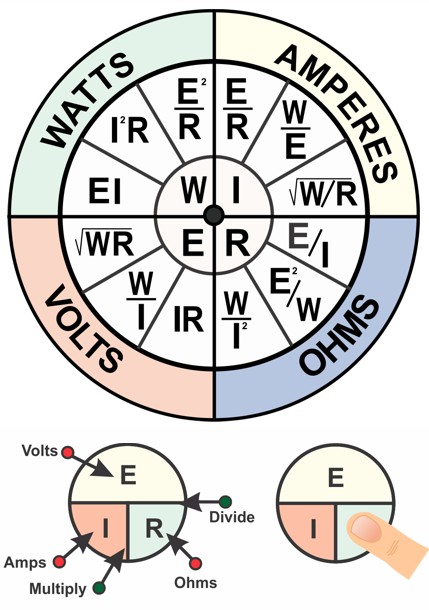Ohm's law basically states that the amount of current in a circuit varies directly with the voltage and varies inversely with the resistance. In other words, if the voltage across a circuit is increased while the resistance is held constant, the currents will increase in direct proportion to the applied voltage.

R = Resistance (Ohms), E = Voltage (Volts),
W = Wattage (Watts), I = Amperes (Amps)
Example #1, if you wish to find the watts ( W ) of a circuit and you know the voltage ( E ) is 12 volts and the amperage ( I ) is 4 amps substitute the numbers into the equation:
W = E × I ..... W = 12 × 4 ...... 48 watts
Example #2, if you wish to find the amperage ( I ) of a circuit and you know the voltage ( E ) is 12 volts and the wattage ( W ) is 200 watts substitute the numbers into the equation:
I = W ÷ E ..... I = 200 ÷ 12 ...... 16.66 amps
Example #3, if you wish to find the voltage ( E ) of a circuit and you know the amperage ( I ) is 3 amps and the resistance ( R ) is 500 ohms substitute the numbers into the equation:
E = I × R ..... I = 3 × 500 ...... 1500 volts
Example #4, if you wish to find the resistance ( R ) of a circuit and you know the voltage ( E ) is 120 volts and the amperage ( I ) is 12 amps substitute the numbers into the equation:
I = E ÷ I ..... I = 120 ÷ 12 ...... 10 ohms
To use the small wheel, cover the value you wish to find, in this case R (Resistance). Notice what's left is E ÷ I. So if E were 100 volts and I were 2 amps your equation would be 100 volts ÷ 2 amps = 50 ohms

